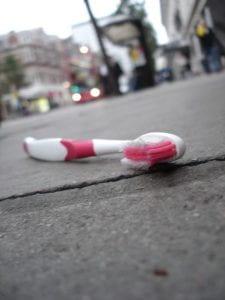As I am writing this on November 17th, less than 24 hours since attending the men’s basketball game vs the UNC Tar heels, trash is still littering the area of TD Arena. Sitting there, in our city, on our own campus, intoxicating the environment. As I was sitting at the basketball game during half-time, I looked around me and noticed all the single use plastic being carelessly consumed and thrown away, well, on the ground. Even I was consuming Diet Coke to keep me quenched while I cheered at the top of my lungs. As I walked by the student entrance to the arena at 6:50 am while on the way to weight lifting, I saw bottles upon bottles, wrappers upon wrappers, and other various trash, upon trash that was mindlessly used and discarded of improperly outside on the ground. Now, as I am writing this, I have been pondering the idea of how to eliminate the use of plastic at our sporting events on such a small scale, to hopefully have a positive impact on the environment. Seeing how much trash was created from just one college basketball game only has my mind racing on the thought of the trash generated from sporting events such as SEC football games, and even on a larger scale, professional soccer.

One way we could start to eliminate the litter on the streets that might never get picked up is to provide multiple trash and recycling bins outside where the students stand in line for hours, waiting for entry. Asking 1,000 students to stand out in the cold miserably for hours, and not excepting people to bring items like food packaging or drinks to keep them satisfied is being unthoughtful and unorganized. If there were trashcans and recycling bins within reach where people could stay in line, I am hopeful that students would toss their garbage in a proper collector, rather than on the ground.
Another idea that I have is to decrease the consumption of plastic is to serve food items in biodegradable plates with biodegradable utensils. Completely eliminating the food concessions is highly improbable and unrealistic, an easy swap could be to serve it in a biodegradable fashion so it is less harmful to our Earth once thrown into a landfill, and it has a chance to break down before entering our oceans.

A third possible change could be to completely eliminate the plastic pompoms. I saw so many pompoms that were used for maybe the pre-show, and half of the first quarter, but then thrown onto the grown, and stomped on by the crowd. The pompoms may be a cute idea, but extremely pointless, and is a small way we can reduce the amount of plastic used for the event. It might seem like an insignificant change, but a lot of small changes render big results.
As a college that stands for environmental sustainability, we have the obligation to translate this practice into all of our channels. Making such a large effort to be sustainable in some aspects of our college, but completely ignored in others is not efficient or very effective.


 ose, and if we fail then we will just become another ball in the infinite abyss.
ose, and if we fail then we will just become another ball in the infinite abyss.


